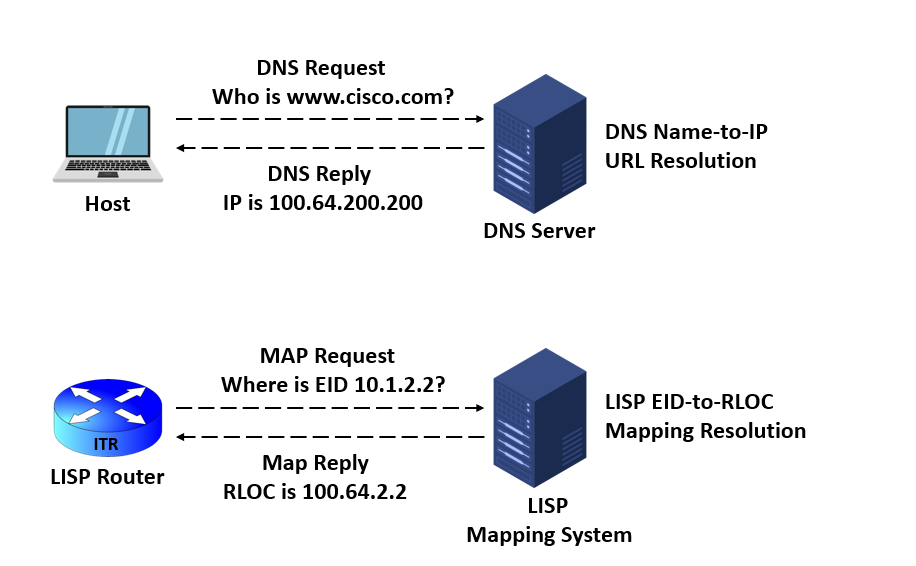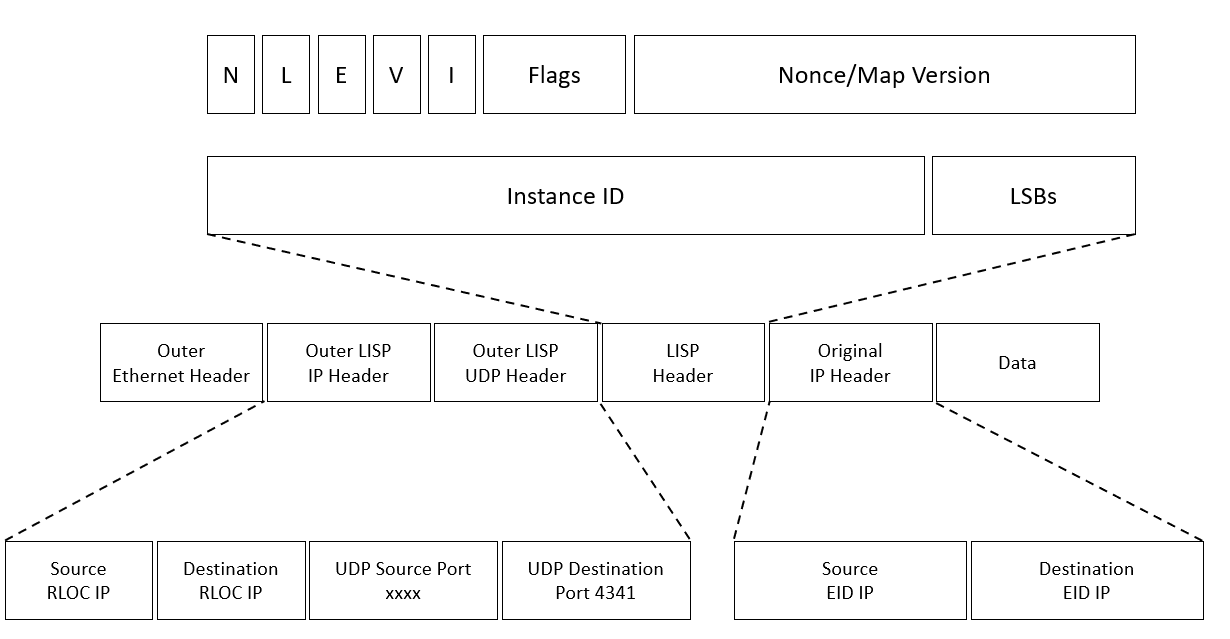Cisco LISP (Locator ID Separation Protocol) has three main components, namely:
- Routing Architecture
- Control Plane Protocol
- Data Plane Protocol
LISP Routing Architecture
Cisco Location Identifier Separation Protocol (LISP) routing architecture design separates the IP addresses into Endpoint Identifiers (EIDs) and Routing Locators (RLOCs). With traditional routing architecture, the endpoint is solely represented by its IP address. Therefore, the IP address will change once the endpoint location changes. With LISP architecture, the endpoint can change locations and still have the same Endpoint Identifier. Only the Routing Locator will be subjected to change.
LISP Control Plane
The control plane and the Domain Name System (DNS) work similarly. The LISP mapping system can resolve an EID into an RLOC by sending map requests to the Map Resolver (MR). LISP is based on a pull model, so only the necessary routing information is requested. Therefore, it is more efficient than the push model, where all routes are pushed into the routers.

LISP Data Plane
The Ingress Tunnel Router (ITR) conducts IP-in-IP/UDP encapsulation wherein the IP packet from the EID is encapsulated with an Outer UDP Header containing the RLOC source and destination address fields.
The Inner Header, which includes the Original IP Header and the Data, is preserved. The LISP Header is located between the outer UDP and the inner header. It includes the encoded information needed to enable forwarding plane functions, such as network virtualization.
The Locator ID Separation Protocol (LISP) packet frame format is shown below:

Below are some of the header fields that are significant to note:
- Outer LISP IP Header – added by the ITR. It encapsulates the EID IP addresses.
- Outer LISP UDP Header – includes the UDP destination port 4341 and the source port selected by the ITR. It prevents polarization and enhances load sharing by ensuring that traffic from LISP sites is not taking the exact same path to a destination even if Equal-Cost MultiPath (ECMP) is in effect.
- Instance ID – a 24-bit LISP header field that provides network virtualization at the path and device levels. It prevents IP address duplication within a LISP site and acts as a secure boundary between organizations.
- Original IP Header – the IP header received by the EID.
LISP Data Plane Combinations
EIDs and RLOCs support both IPv4 and IPv6 addresses. Therefore LISP data plane allows the following LISP encapsulation combinations:
- IPv4 EIDs encapsulated with IPv4 RLOCs.
- IPv4 EIDs encapsulated with IPv6 RLOCs.
- IPv6 EIDs encapsulated with IPv4 RLOCs.
- IPv6 EIDs encapsulated with IPv6 RLOCs.
Download our Free CCNA Study Guide PDF for complete notes on all the CCNA 200-301 exam topics in one book.
We recommend the Cisco CCNA Gold Bootcamp as your main CCNA training course. It’s the highest rated Cisco course online with an average rating of 4.8 from over 30,000 public reviews and is the gold standard in CCNA training:
